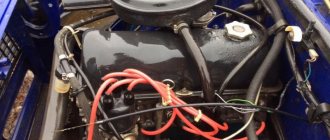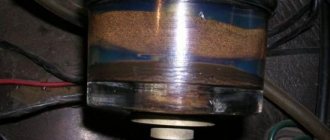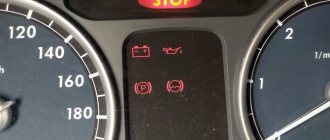The end of the 90s for the domestic automobile industry was marked by the appearance of the VAZ 2112 engine. It was a completely new power unit in its design, which included the use of 2 camshafts, as well as 16 valves (4 for each cylinder). The engine joins the tenth family of front-wheel drive cars.
It was introduced in 1997, and if you look at the facts, it turned out to be the manufacturers' first engine with 16 valves. Therefore, this particular engine is the ancestor of all subsequent versions with two camshafts. Thanks to this solution, manufacturers were able to increase performance and improve technical characteristics.
Characteristics of the motor 2112
The main task of the designers when creating the ICE 2112 was to improve the technical characteristics to the world standards that had increased at that time, so a gas distribution scheme with two DOHC camshafts and a four-stroke engine diagram with 16 valves were adopted. For the safety of the valves, pistons with grooves were used by default, which in theory should not bend them if the timing belt breaks.
Design 2112
However, if the first two design solutions in the engine are not satisfactory, then there was a flaw with the pistons that was not corrected by the designers:
- a groove depth of 3 mm and a gasket thickness of 1.3 mm were not enough for a valve stroke of 7.5 mm;
- Due to the “extra” 1.8 mm, the piston bends the valve.
In subsequent modifications, the deficiency was corrected by installing pistons 21124 with a groove depth of 5.5 mm. The basic version of the 21120 motor remained defective, so the engine is characterized by the following performance properties:
| Manufacturer | AvtoVAZ |
| Engine brand | 2112 |
| Years of production | 1998 – 2006 |
| Volume | 1499 cm3 (1.5 l) |
| Power | 68.4 kW (93 hp) |
| Torque moment | 133.3 Nm (at 3400 rpm) |
| Weight | 120 kg |
| Compression ratio | 10,5 |
| Nutrition | injector |
| Motor type | in-line |
| Injection | electronic multipoint |
| Ignition | separate coil for each spark plug |
| Number of cylinders | 4 |
| Location of the first cylinder | TVE |
| Number of valves on each cylinder | 4 |
| Cylinder head material | aluminum alloy |
| Intake manifold | integrated with the receiver, the module is made of polymer |
| An exhaust manifold | exhaust pipe combined with the converter |
| Camshaft | 2 pcs. |
| Cylinder block | cast iron, weight 28.8 kg |
| Cylinder diameter | A class – 82 – 82.01 mm B class – 82.01 – 82.02 mm C class – 82.02 – 82.03 mm D class – 82.03 – 82.04 mm E class – 82.04 – 82.05 mm |
| Pistons | groove 3.5 mm deep |
| Rings | steel 21083-1004029 or cast iron 21083-1000100-10 |
| Piston diameter | A class –81.94 – 81.95 mm B class – 81.95 – 81.96 mm C class – 81.96 – 81.97 mm D class – 81.97 – 81.98 mm E class – 81.98 – 81.99 mm |
| Crankshaft | base from 21083, added torsional vibration damper |
| Number of main bearings | 5 |
| Piston stroke | 71 mm |
| Fuel | AI-95 |
| Environmental standards | Euro-3 |
| Fuel consumption | highway – 5.9 l/100 km combined cycle 7.5 l/100 km city – 9.4 l/100 km |
| Oil consumption | maximum 0.5 l/1000 km |
| Engine oil for 2112 | 5W-30, 5W-40, 10W-40, 15W-40 |
| Engine oil volume | 3.5 l |
| Operating temperature | 90° |
| Motor life | declared 150,000 km, real 250,000 km |
| Adjustment of valves | hydraulic pushers |
| Cooling system | forced, antifreeze |
| Coolant quantity | 7.8 l |
| water pump | with polymer impeller |
| Candles for 2112 | BCPR6ES or AU17DRVM, thread length 19 mm, diameter 14 mm, key 16 mm |
| Gap between spark plug electrodes | 1.1 mm |
| timing belt | DOHC |
| Timing belt | 136 teeth, belt width 25.4 mm |
| Cylinder operating order | 1-3-4-2 |
| Air filter | Nitto, Knecht, Fram, WIX, Hengst |
| Oil filter | with check valve |
| Flywheel | 128 teeth 10.1 mm high, clutch surface size 256.7 mm |
| Flywheel mounting bolts | M10x1.25 mm, length 26 mm |
| Valve stem seals | code 90913-02090 inlet light, code 90913-02088 exhaust dark |
| Compression | cylinder pressure from 12 bar nominal, pressure difference in individual cylinders within 1 bar |
| XX speed | 800 – 850 min-1 |
| Tightening force of threaded connections | spark plug – 30.7 – 39 Nm flywheel – 61 – 87 Nm clutch bolt – 19 – 31 Nm bearing cap – 68 – 84 Nm (main) and 43 – 53 Nm (connecting rod) cylinder head – four stages 20 Nm, 69 – 86 Nm + 90° + 90° |
Information on what oil to use in internal combustion engines is relevant for owners, since hydraulic valve compensators are sensitive to the quality of the lubricant, therefore the manufacturer recommends semi-synthetic engines from Manol, Mobile, Lukoil, Shell and TNK.
Depending on the season, the manual recommends which oil to pour into the engine:
- winter – 5W30 or 5W40;
- summer – 20W30 or 20W40;
- all-season lubricant - 10W30.
Thanks to 5 standard sizes of repair kits for cylinder liners and piston diameters, major repairs can be carried out many times, and the engine is one of the “million-dollar” engines.
Advantages
The completely new VAZ 2112 engine with 16 valves injector was distinguished by a fairly large number of different advantages, since manufacturers for the first time used two camshafts in its design. The main positive qualities noted by the owners are the following:
- Great resource. If you treat the engine normally and service it on time, as well as use it carefully, then you can achieve 200-300 thousand kilometers without any major complaints or the need for major repairs.
- The dynamics are simply impressive. A change in the power system, as well as the use of 16 valves, has led to the fact that the power unit has received greater power and torque, so it accelerates a light car quite quickly.
- Easy to repair and maintain. Despite the fact that the engine already has an injection power system and is controlled using an electronic unit, its mechanical part still remains quite primitive.
- Ease of diagnosis. Now, thanks to the use of an ECU, you don’t have to diagnose breakdowns from personal experience, but you can simply connect with a regular scanner and read the errors. Most of them can show VAZ 2112 engine sensors and are easy to fix.
Design Features
Since AvtoVAZ management involved specialists from General Motors (timing) and Porsche (layout) in the design of the 16-valve internal combustion engine, the 2112 engine has the following design solutions:
- the intake valves are controlled by the cams of their own camshaft, the exhaust valves have a separate camshaft;
- oil channels are laid inside the cylinder head;
- floating piston pin fit;
- holes in the block for additional attachments;
- forged steel connecting rods 121 mm long.
Overhaul 2112
A pleasant feature for the owners of these engines are hydraulic pushers, which eliminate the need for periodic valve adjustments with your own hands or at a service station.
Operating principle of hydraulic pushers
Maintainability
Like all VAZ engines, the VAZ-2112 has high maintainability. The simple design and interchangeability of many parts with other brands of engines do not cause difficulties during restoration.
There is no need to look for spare parts for repairs - they are available in any specialized store. The only danger when purchasing is not to run into a fake. The market is literally flooded with counterfeit spare parts for VAZ engines. The quality of parts from Chinese manufacturers is especially low.
In most cases, internal combustion engine repairs are carried out by car owners themselves, in the garage. As a rule, restoring an engine using this method is much cheaper, and sometimes even better, than at a service station.
VAZ-2112 is a reliable, economical and easy-to-maintain and repair engine. With timely maintenance and proper operation, it is able to please its owner with many hundreds of thousands of kilometers, exceeding the resource declared by the manufacturer.
Engine modifications
Due to the presence of free space inside the block and cylinder head, immediately after the creation of the basic version of the two-shaft 16-valve engine 2112, its versions began to appear:
- 21124 – boosting the internal combustion engine to 89 hp. With. due to the volume of 1.6 l;
- 21126 – modernization of the engine to a power of 98 hp. pp., volume 1.6 l;
- 21128 – maximum combustion chamber volumes 1.8 liters, power increase to 105 liters. With.
In these versions, the valves do not bend; overhauls are needed much less frequently. The first version was created solely to increase volume and comply with Euro-3 standards. Factory tuning was carried out by increasing the block height to 197.1 mm and increasing the piston stroke.
In the second version, the designers tried to ensure the maximum operational life of the units. For this purpose, special cylinder honing is used using the Federal Mogul method. Block 21126 is gray in color, and the number of classes of repair kits for pistons and cylinder liners has been reduced to three in increments of 0.01 mm.
Version 21128 is not manufactured by AvtoVAZ, but by a third-party manufacturer, ZAO Super-Avto. Engine characteristics have been significantly improved:
- volume 1.8 l;
- torque 162 Nm;
- power 75 kW.
The cylinders are bored by 0.5 mm (diameter 82.5 mm), an original crankshaft has been developed that provides a piston stroke of 84 mm, the width of the rings has been changed to 2 mm (oil scraper), 1.5 mm (lower compression) and 1 mm (upper compression) . The throttle flow area has been increased to 51 mm, Siemens injectors with increased performance have been installed.
There are two more modifications of the ICE 2112:
- 21127 - created in 2013, torque increased to 148 Nm, volume to 1.6 liters, power to 106 hp. With.;
- 21179 is the first option in the manufacturer’s line with a volume of 1.8 liters for Largus and Vesta.
ICE 2127
ICE 21179
In the first version, the problem of floating speed is solved by replacing one MAF (mass air flow) with two sensors DTV (air temperature) and DBP (absolute pressure).
The 21179 motor used a phase shifter for the first time; it was created on the basis of the 21126, therefore it is conventionally considered a modernization of the 2112 generation.
Phase shifter 21179
Graphs of 16 valve engines - power and torque
All engines of the “tenth hatchbacks” are ordered by power as follows: 21120, 21124, 21114 and 2111. They develop 93, 90, 81 and 77 “forces”. The graph shows how power varies with rpm.
The first two engines, 20 and 124, are 16-valve. Both belong to the Euro-3 class.
Engines 21124 of later years of production meet Euro-4 standards. They have an improved catalyst installed. The ECU unit was also installed differently, updated.
124 engine under the hood of the “two-wheeler”
The pistons of the 124 series engines have grooves for the valves. Simply put, the internal combustion engine of the VAZ-21120 is plug-in (valve bending as a result of a broken timing belt, the valves will need to be replaced, and then it depends), and 21124 is not plug-in (does not bend the valve). Let's estimate the torque.
The most interesting thing here is the VAZ-21120 engine. In terms of “low-end traction” it is not much inferior to 8-valve engines.
Formal characteristics
Here are the characteristics of two different motors:
- ICE model: 21120/21124;
- Working volume: 1,488/1,596 l;
- Compression ratio: 10.5/10.3;
- Power: 93/90 hp;
- Rated power speed: 5600/5000 rpm;
- Maximum torque: 140/131 N*m;
- Recommended fuel: AI-95/AI-95;
- Ecology: Euro-3/Euro-4 or Euro-3.
The lower the compression ratio, the more “omnivorous” the engine will be in relation to fuel.
Advantages and disadvantages
The cooling system is not fully developed, and the engine’s capabilities are not used, even half:
- experts recognize that the 2112 cylinder head has an impeccable design of the intake and exhaust tract;
- however, the manufacturer equips it with small-diameter valves from previous versions of the internal combustion engine, using the engine’s capabilities by 35 - 40% maximum.
Insufficient valve diameter
At the same time, you can increase the power on your own - you need to carefully bore the holes without damaging the partition, and then select springs and lightweight valves and arrange them inside the cylinder head.
Impact of body geometry on handling
During the operation of a VAZ 2112 car, at some point deformation of body parts occurs. Safety on the road and ease of operation depend on the level of their wear.
VAZ 2112 has been produced since 1999. The car body of this model is similar to the 2110 modification, the difference is that the first one is slightly shorter than the second one.
The geometric properties of the 2112 made it possible to equip the car with many additional functional capabilities.
It combines the winning parts appropriate for the “ten”, as well as the rear seat of the station wagon from the 2111 model, which made the car much roomier and more maneuverable. The ability to transform the rear seat allows, if necessary, to significantly increase the volume of the interior. Improved maneuverability properties have simplified the process of entering a turn, which has significantly increased the level of safety for road users.
The VAZ 2112 has several modifications, for example, model 21123 is characterized by an unusual design of the hood and bumper, which allowed the car body to become popular among many car enthusiasts. After some time, the VAZ 2112 had a new grille model, and the hood took on a standard look.
What cars was it used in?
Only three VAZ models using the 2112 engine left the assembly line of the manufacturer's plant:
- 21103 – sedan;
- 21113 – station wagon;
- 2112 – sedan, GLI luxury and Standard versions.
VAZ-2112
Since the characteristics of the engine 21124 and internal combustion engine 21128 are not too different from the original, it was mounted on the same VAZ Lada. The modification of the 21126 engine was equipped exclusively with Prioras.
Reliability
Despite complaints from some car owners, the internal combustion engine of the VAZ-2112 can be confidently called a reliable power unit. The whole problem of reliability lies in the attitude towards it on the part of the car enthusiast himself.
With timely and high-quality maintenance and compliance with all manufacturer’s recommendations, the engine practically does not cause any complaints. With this attitude, the engine resource increases significantly.
The only direct defect of the manufacturer of this motor is the possibility, or rather the guarantee, of the valves bending when the belt breaks. But, with a careful, caring attitude towards the engine, this problem can be reduced to an absolute minimum. It is enough to replace the belt not after 50-60 thousand km, as the manufacturer recommends, but much earlier. For example, after 30-40 thousand km. Financial costs will be much less than when repairing the cylinder head.
Maintenance
The ergonomic design of the internal combustion engine allows you to service the 2112 engine with the following frequency:
| Maintenance object | Time, year or mileage, 10,000 km (whichever comes first) |
| Timing belt | replacement after 100,000 km |
| Battery | 1/20000 km |
| Valve clearance | 2 /20000 km |
| Crankcase ventilation | 2 /20000 km |
| Belts that drive attachments | 2 /20000 km |
| Fuel line and tank cap | 2 /40000 km |
| Motor oil | 1/10000 km |
| Oil filter | 1/10000 km |
| Air filter | 1 – 2/40000 km |
| Fuel filter | 4 /20000 km |
| Heating/Cooling Fittings and Hoses | 2 /40000 |
| Coolant | 2 /20000 km |
| Oxygen sensor | 1.5/100000 km |
| Spark plug | 1 – 2 /20000 km |
| Exhaust manifold | 2/40000 km |
Unlike coolant, oil partially settles on the walls of the lubrication channels, so with a volume of 3.5 liters, 3.2 liters of a semi-synthetic product is actually required.
Maintenance
Since a broken belt leads to the need for major repairs, and manufacturers recommend changing it after 100 thousand kilometers, it is worth paying attention to them every 50 thousand kilometers. This will help avoid serious problems.
The oil in the VAZ 2112 engine (16 valves) must be changed after traveling 10 thousand kilometers. It is also worth paying attention to replacing the oil filter. It is recommended to change the remaining filters (cabin and air) after 20 thousand kilometers.
The cooling of the VAZ 2112 engine leaves much to be desired in terms of the quality of the parts used for its assembly. Therefore, do not forget about replacing the coolant in order to avoid overheating of the engine. Manufacturers recommend changing the coolant every 20 thousand kilometers.
Malfunctions: causes, elimination
The 2112 motor has the following weaknesses in its design:
| Breaking | Cause | Repair |
| Broken timing belt drive, bent valves | 1)shaft wear 2) leaks of shaft seals; 3) pump leaks | diagnostics, replacement of consumables and worn-out parts |
| "Tripling" | 1) ignition problems 2) low compression | 1) replacing spark plugs, wires and coils with a set 2) restoring compression |
| Floating speed | 1) carbon deposits on the throttle valve 2) failure of IAC, TPS, DPKV, Mass air flow sensor | 1) cleaning the damper 2) replacing the sensor |
| Knock | 1)hydraulic compensators 2) pistons 3) main bearings 4) connecting rod bearings | adjustment or replacement |
It is very difficult to independently determine the cause of internal combustion engine vibrations, since special equipment is required.
Weak spots
Unfortunately, the VAZ-2112 is not without them. The most important one is the timing belt. If it breaks, a meeting with the valves is inevitable. And this is already a serious repair of the cylinder head. A pump leak can cause a breakdown, causing the belt to become splashed with coolant, become wet and lose its properties.
Leaking camshaft oil seals cause the belt to become oily, which is no less dangerous. Wearing the shafts also does not bring any benefit. The fact is that in this case the belt gets slightly distorted. Its presence is indicated by the appearance of a grinding noise when the engine is not warmed up.
Sometimes the motor starts to “trouble”. As a rule, the cause of this phenomenon must be sought in the electrics (ignition module, high-voltage wires, spark plugs) or in the throttle valve, idle air control. The culprit may be various sensors (DPKV, DPS, DMRV).
The thermostat does not shine with quality. As a result of its failure, the engine may overheat, or, conversely, the inability to reach operating temperature.
The car owner is often bothered by various unauthorized noises. They are worth paying close attention to. Knocks can be caused by faulty hydraulic compensators, connecting rod or main bearings.
If any malfunctions are detected, the best solution would be to go to a service station to diagnose the engine.
Engine tuning
Before tuning, you should take into account the design nuances that the 2112 engine has:
- chipping in this case is useless;
- install a Stolnikov 8.9, STI-2 or STI-3.1 camshaft;
- replace the throttle with 54 - 56 mm;
- mount the exhaust tract with spider 4/2/1.
Camshaft Stolnikov
Thus, ICE 2112 is the 5th generation of AvtoVAZ engines with a four-stroke cycle. In the basic version, the design is flawed (the valves bend); this error is corrected in the modifications.
If you have any questions, leave them in the comments below the article. We or our visitors will be happy to answer them











